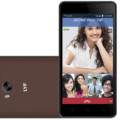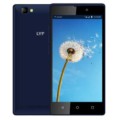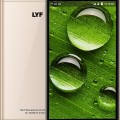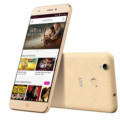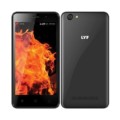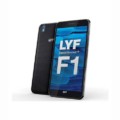Lyf Flame 7s
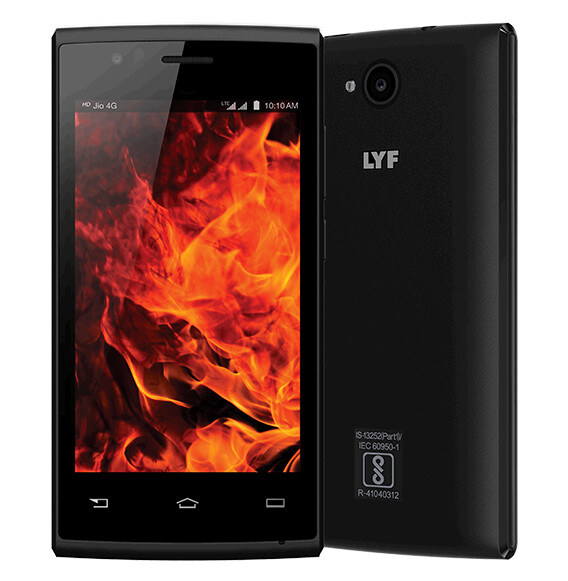

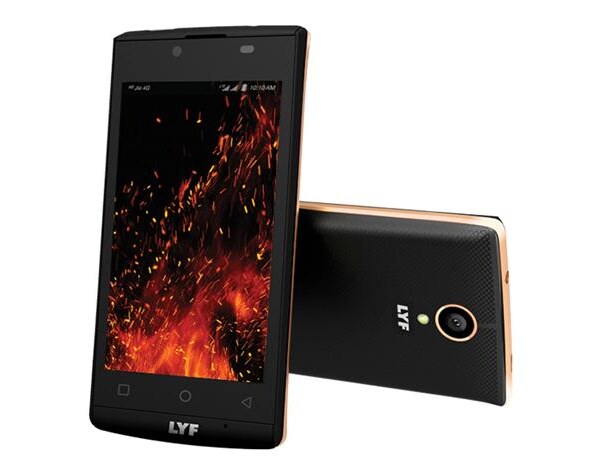
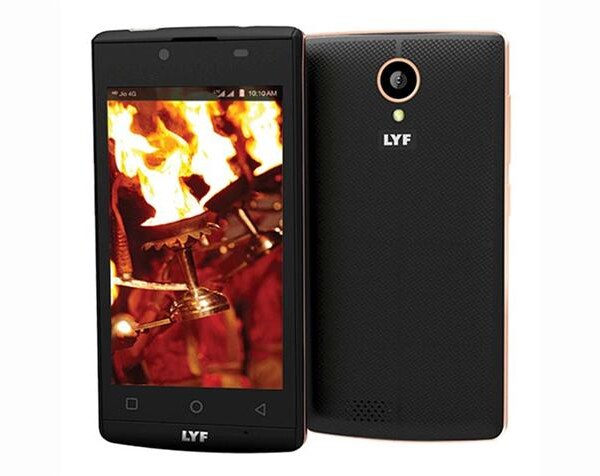
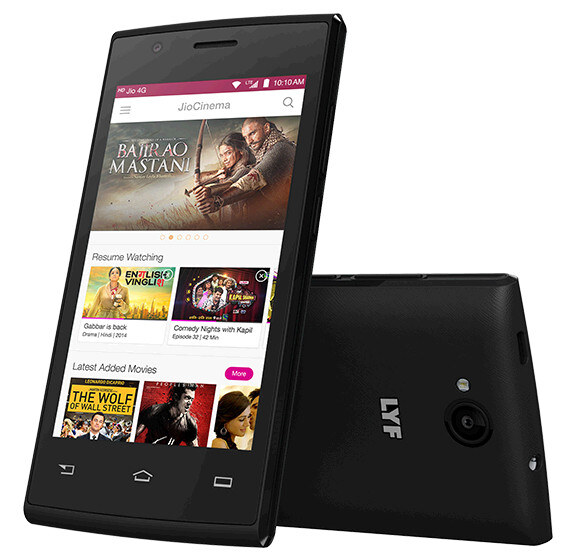
-
Processor: 1.5GHz quad-core Speadtrum processor
-
RAM: 1 GB
-
Storage: 8 GB
-
Display: 4.00-inch
-
Camera: 5 mega-pixel/0.3-megapixel
-
OS: Android 5.1 (Lollipop)
October 2016: Couple of days ago, Reliance launched its smartphone Lyf Flame 7s. It offers support for 4G VoLTE and 10 regional languages. It is available in Black and Red colour. The smartphone is price at Rs. 3,499.
Display and Design
The Lyf Flame 7s comes with a 4.00-inch touchscreen display. It has display resolution of WVGA TN 480 pixels by 800 pixels. It is protected with Asahi Dragontrail Glass protection. Its display Dimensions are 125.6×63.8×11.55mm with a weight of 127g.
Hardware and Software
The Lyf Flame 7s smartphone runs Android 5.1 (Lollipop). It inbuilts a 1.5GHz quad-core Spreadtrum processor. It sports Mali400 MP2 GPU for graphics. Lyf Flame 7s comes with 1 GB of RAM. The phone packs 8 GB of internal storage that can be expand up to 32 GB via microSD card.
Camera
The Lyf Flame 7s smartphone packs 5 mega-pixel autofocus primary camera with LED Flash and HD video recording at 60fps and fixed focus functionality. In the front, there is a VGA 0.3-megapixel selfie camera as well with 4x digital zoom. Other features includes slow-motion, smile shutter, burst mode, HDR, panorama, face detection, white balance, ISO adjustment, and anti-banding.
Battery and Sensor
The Lyf Flame 7s has Dual Sim slots (Normal and Micro). It consists of 1800mAh battery. It offers up to 6 hours of talk time on 4G, and 400 hours of standby time. Sensors on the phone includes Proximity sensor, Ambient light sensor, Accelerometer sensor.
Connectivity
In connectivity section, the options are include:
- WiFi 802.11 b/g/n
- Bluetooth 4.0
- 4G VoLTE
- MicroUSB 2.0
Lyf Flame 7s - Specs
Network
Design
-
Type Design Type called form factor refers to a mobile phone's size, shape, and style as well as the layout and position of major components of phone. There are three major form factors seen in mobile phones => bar phones, folding phones and sliding phones.Bar
-
Dimensions125.6×63.8×11.55mm
-
Weight127g.
-
ColorsBlack and Red colour
Display
-
Size4.00-inch
-
Resolution480 pixels by 800 pixels
-
Display Colors Display Colors is refers to the number of different shades of colors that the screen is capable of displaying => 64K colors, 256K colors and 16 million colors, Obviously 16M is highest available range of colors and better than others.16M
-
Display Protection Display Protection => Gorilla Glass is a special alkali-aluminosilicate glass shield with exceptional damage resistance that helps protect mobile displays from scratches, drops, and bumps of everyday use, It is always better to go for a smartphone with Gorilla Glass for that added protection and peace of mind.Asahi Dragontrail Glass protection
Software
-
Operating System OS => Every computer system run on a base software called Operating System (OS). Operating System controls all basic operations of the computer (such as smartphone, PDAs, tablet computers and other handheld devices). The Operating System allows the user to install and run third party applications (apps), apps are used to add new functionality to the device.Android 5.1 (Lollipop)
Hardware
-
Chipset Chipset is a group of integrated circuits designed to perform one or a more dedicated functions, often with real time computing constraints, Popular smartphones are equipped with more advanced embedded chipsets that can do many different tasks depending on their programming.Speadtrum
-
CPU CPU (Central Processing Unit) mostly known as processors, CPU processes instructions in order to carry out certain functions that make your device operate properly. Processors are often described as the brain of computers, smartphones and tablets, Smartphones and tablets rely on processors to carry out their every task, Processors are an incredibly important factor in selecting any type of computing device, including your smartphone.1.5GHz quad-core Speadtrum processor
-
GPU GPU (Graphics Processing Unit) is a single-chip processor designed to rapidly manipulate and alter memory to accelerate the creation of images in a frame buffer intended for output to a display, This includes things such as lighting effects, object transformations, and 3D motion.Mali400 MP2 GPU
-
RAM (Memory) RAM (Random Access Memory) is a type of computer memory that can be accessed randomly, any byte of memory can be accessed without touching the preceding bytes that allows information to be stored and accessed quickly from random locations. RAM is the most common type of memory found in computer systems, smartphones, tablets and other electronic devices.1 GB
-
Internal Storage Internal Storage is a data storage space (flash memory) mostly used in smartphones, tablets and other electronic devices where operating system, apps, music, photos, videos, files and other user data Is stored.8 GB
-
Card Slot Memory Card Slot is a special slot for inserting a memory card. Memory cards allow you to expand the phone's built-in memory, A memory card (sometimes called a flash memory card or a storage card) is a small storage medium used to store data such as text, pictures, audio, and video, for use on small, portable or remote computing devices such as mobile phones, mp3 players, digital cameras.32 GB
-
Sensors Sensors are electronic components that detects and responds to some type of input from the physical environment. The specific input could be light, heat, motion, moisture, pressure and location, The output is generally a signal that is converted to use in computing systems, a location sensor, such as a GPS receiver is able to detect current location of your electronic device.Proximity sensor, Ambient light sensor, Accelerometer sensor.
Camera
-
Primary Camera is able to capture photographs and usually videos, The most important characteristics of a camera are the resolution (measured in megapixels), lens focus type (fixed or automatic), higher megapixel cameras are known to capture higher quality photos, but not always a good measurement of the photos quality.5 mega-pixel
-
Video60fps
-
Camera Featuresslow-motion, smile shutter, burst mode, HDR, panorama,
face detection, white balance, ISO adjustment, and anti-banding.
Battery
-
Battery Type Battery Type => Cell phones run on various kinds of batteries depending on the manufacturer, phone size or shape and features. There are basically four types of cell phone batteries => Lithium Polymer, Lithium Ion, Nickel Metal Hydride and Nickel Cadmium.Li-Ion (Lithium Ion)
-
Capacity Battery Capacity is a measure (typically in Amp-hr) of the charge stored by the battery, and is determined by the mass of active material contained in the battery. The battery capacity represents the maximum amount of energy that can be extracted from the battery under certain conditions.1800mAh battery
-
Standby Standby Time is the total amount of time that you can leave your is fully charged, turned on and ready to send and receive calls or data transmissions before completely discharging the battery.400 hours
Connectivity
-
Bluetooth Bluetooth is a wireless communications technology for exchanging data between mobile phones, headsets, computers and other network devices over short distances without wires, Bluetooth technology was primarily designed to support simple wireless networking of personal consumer devices.4.0
-
Wi-fi Wi-Fi is a popular wireless networking technology using radio waves to provide high-speed network connections that allows devices to communicate without cords or cables, Wi-Fi is increasingly becoming the preferred mode of internet connectivity all over the world.802.11 b/g/n
-
Infrared Infrared connectivity is an old wireless technology used to connect two electronic devices. It uses a beam of infrared light to transmit information and so requires direct line of sight and operates only at close range.
-
USBMicro 2.0
-
GPS GPS The Global Positioning System is a satellite-based radio navigation system, GPS permits users to determine their position, velocity and the time 24 hours a day, in all weather, anywhere in the world, In order to locate your position, your device or GPS receiver must have a clear view of the sky.Yes
-
NFC NFC (Near field communication) is a set of standards for smartphones and similar devices to establish peer-to-peer radio communications with each other by touching them together or bringing them into proximity, usually no more than a few inches.
-
Headphone Jack

